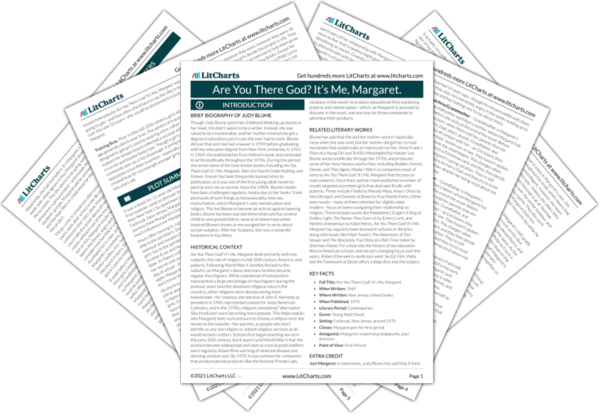Conventional wisdom is that Philip Leroy is the most popular boy in the class. The fact that Nancy put him first in her Boy Book makes the other girls feel justified in their choice; it’s also why Nancy questions Margaret about making different choices. When Margaret shuts Nancy down with an eyebrow raise, though, it suggests it might not be so hard to stand up to Nancy—she can and will let her friends make their own choices, if only they work up the courage to assert themselves.
